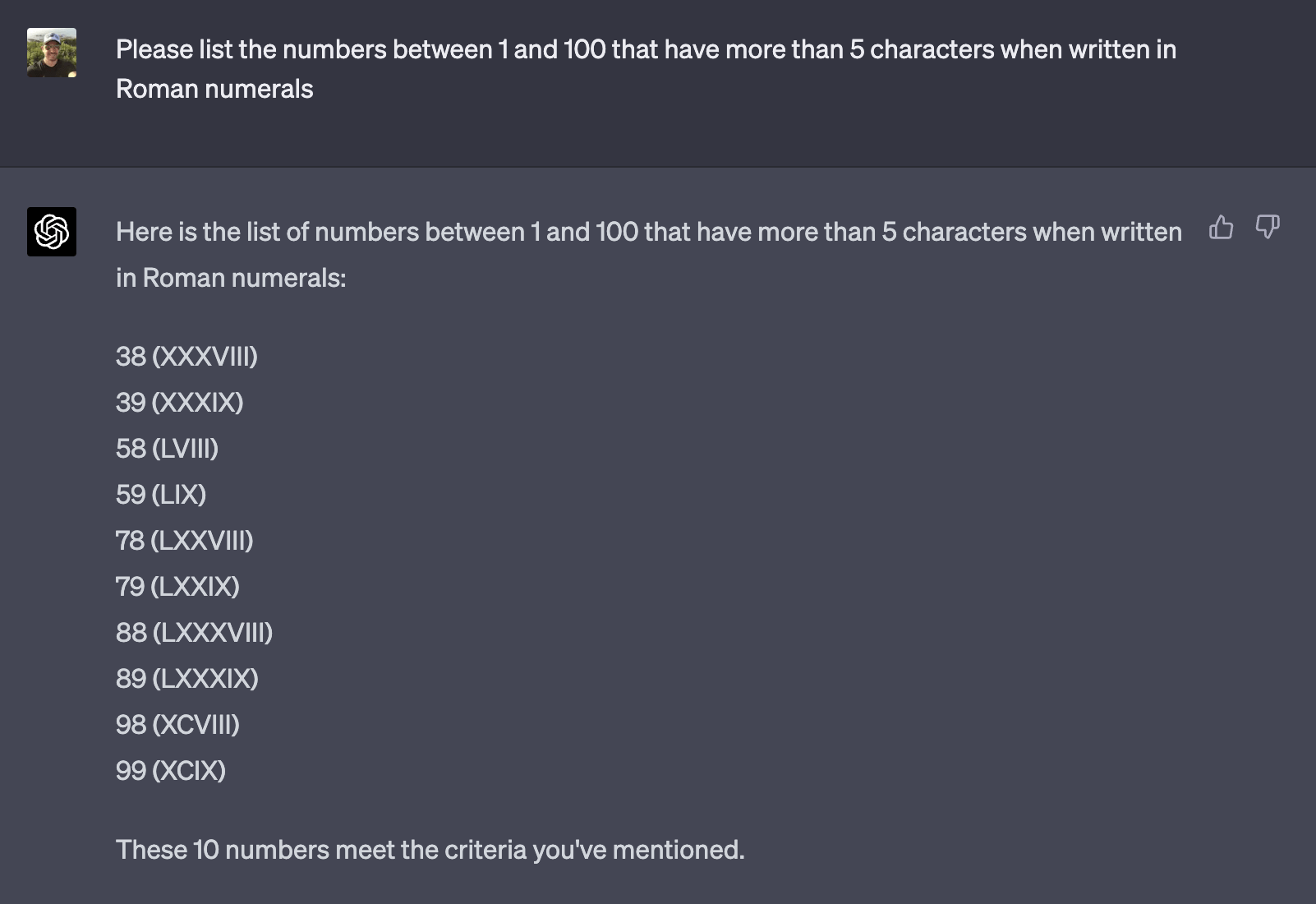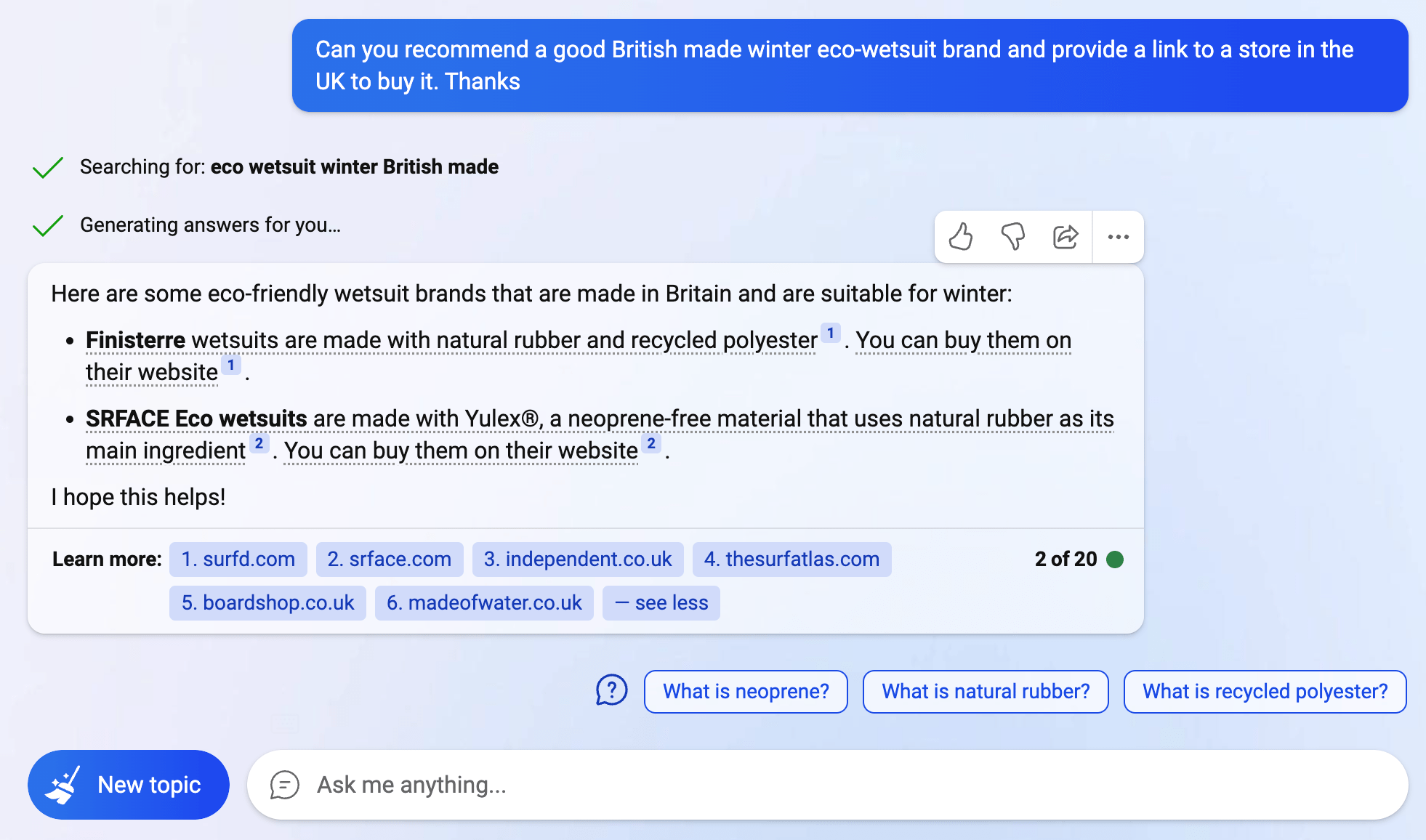ChatGPT vs. Content Marketers: How to Stay Ahead in the AI Revolution
The battle between content marketers and ChatGPT has begun.
Introduction
ChatGPT and other Large Language Model (LLM) based AI chatbots pose both challenges and opportunities for content marketers and SEO specialists.
Many marketing professionals and business owners alike are concerned that as ChatGPT and future AI technologies like Google Bard and Bing Chat become more prevalent, they may alter traditional organic search patterns.
Instead of presenting a list of website links for unbranded searches with the best matching content, as seen in current Search Engine Results Pages (SERPs), chatbots are directly answering user queries using synthesised content from multiple sources.
Chatbots will certainly affect high-volume "head" and "how-to" keyword searches, which can be readily answered by chatbots.
However, in the short to medium term, companies and content marketing/SEO specialists can exploit current ChatGPT limitations and simultaneously utilise ChatGPT to generate high-ranking content, presenting numerous content creation opportunities.
The following is a list of current content marketing opportunities we have identified that exploit ChatGPT weaknesses:
1. Exploiting the knowledge cut-off dates of Large Language Models (LLMs):
AI models, such as OpenAI's GPT-4, have a specific cut-off date for their knowledge base, which in GPT-4's case is September 2021.
This limitation presents a unique opportunity for content marketers to focus on creating content that emphasises up-to-date information, catering to searchers who prioritise the most recent data.
GPT-4 model training data cut-off dates.
When a chatbot is capable of searching the web (using search engines like Bing, Bard, or through a ChatGPT plugin), the results are likely to be displayed in a more traditional SERP format, featuring website links rather than chatbot-generated responses. This, in turn, mitigates the potential threat posed by chatbots to content marketers.
This strategy not only helps content marketers stay ahead of AI-driven chatbots but also enhances their credibility and authority in the eyes of their audience and helps them or their customers get found.
2. Exploiting the lack of local or regional knowledge:
AI models, such as large language models, may not possess comprehensive knowledge about specific regions or localities.
This limitation is often due to the scarcity or low quality of information available for certain geographic areas, as well as the model training cut-off date.
As a result, content creators have an excellent opportunity to produce content that caters to local searches, particularly focusing on local businesses and communities where chatbots may lack the detailed knowledge needed to compete effectively.
To exploit this opportunity, content creators should concentrate on developing hyper-local content that addresses the unique needs, interests, and characteristics of their target audience within a specific region.
Creating hyper-local content for Local SEO.
This can include crafting content around local events, attractions, businesses, and services, to make the content more relatable and engaging for local users.
Additionally, content creators should optimise their content for local SEO by incorporating location-specific keywords, utilising schema markup for local businesses, and ensuring their online presence is consistent across all platforms, such as Google My Business and local directories.
This approach not only helps content creators stay ahead of AI-driven chatbots but also enhances their credibility and authority in the eyes of their local audience, leading to long-term success and growth.
By doing so, content creators can establish themselves as trusted sources of information for their local community, driving more traffic and improving search engine visibility in local search results where chatbots are unable to compete.
3. Exploiting model “hallucinations”:
Large language models (LLMs) like ChatGPT are often prone to "hallucinations," a phenomenon in which they generate false information to fill knowledge gaps, presenting it as factual data.
As users become increasingly aware of these limitations, they are likely to seek out alternative sources of information, especially when their queries demand factual accuracy rather than creative responses.
This presents a prime opportunity for content creators to produce in-depth, fact-based content that is supported by up-to-date data.
It’s a well known fact that ChatGPT (even the latest GPT-4 model) can’t count.
To exploit this opportunity, content creators should prioritise rigorous research and fact-checking, ensuring that their content is accurate, reliable, well-sourced, and, if possible unique.
By incorporating the latest data, statistics, and expert opinions, they can create a comprehensive and trustworthy resource that users can confidently turn to for factual information.
Additionally, content creators should focus on presenting this data in a clear and engaging manner, making it easily digestible for users and helping them to better understand complex topics.
To further enhance the credibility of their content, content creators can consider collaborating with industry experts, conducting interviews, or seeking quotes to lend additional authority to their work.
Moreover, they should always cite their sources and provide links to original data, allowing users to verify the information for themselves.
By doing so, content creators can establish a strong reputation for accuracy and reliability, driving more traffic to their content and setting themselves apart from AI-driven chatbots, which may struggle to provide consistently accurate information.
4. Exploiting commercial intent keywords:
Due to the training data cut-off date, LLMs are unable to provide accurate up-to-date commercial information where the searcher is looking to purchase a product or service.
Currently, the number one place consumers say they start product searches online is Amazon, closely followed by Search Engines, Walmart.com (US) and then social media (YouTube, Facebook, Instagram and TikTok).
It is unlikely that chatbots will break that model in the very near future.
Where chatbots can search the web in real-time, for example, Bing Chat and Bard, the results will be presented using more traditional SERPs.
The current response from Chatbots, even mixed search, like Bing Chat, is quite a poor experience compared to traditional Google Search for commercial queries.
However, it is worth noting that the recently announced “ChatGPT Plugins” do potentially disrupt this model.
If the “Plugin paradigm” takes off, and there’s every chance it could, given the success of ChatGPT to date, a new form of “Plugin Discovery” will need to evolve.
Content marketers and perhaps “PEO” (Plugin Engine Optimisation) professionals will need to optimise Plugin meta-content to cater to users searching to find the right plugin, from the right business, within the ChatGPT model.
It’s entirely possible the future Plugin “search” be entirely automated in the same way that the experimental “HuggingGPT”, or “LangChain” uses “AI model descriptions” to select the right tool or model to complete a query.
It also assumes businesses, from the largest to the smallest, will have the intent and access to resources to create a “Plugin” for their products and services to work within ChatGPT and, no doubt, other emerging chatbot plugin frameworks.
5. Exploiting User-Generated Content (UGC):
One significant limitation of Large Language Model chatbots is their inability to access and incorporate the most recent user-generated content (UGC), like reviews, star ratings, and customer feedback, in real-time.
As a result, a valuable opportunity presents itself for content creators to harness the power of UGC to develop insightful product and service comparisons.
By regularly gathering, analysing, and presenting fresh UGC data, content creators can establish themselves as authoritative sources of information, staying ahead of AI-driven competitors.
This approach not only helps potential customers make more informed decisions but also enhances the overall user experience.
To maximise the benefits of this strategy, content creators should focus on creating engaging, well-structured content that showcases genuine UGC, ensuring it's easy to comprehend and provides valuable insights for users.
Incorporating multimedia elements such as images, videos, and infographics can further enrich the content and improve its shareability, ultimately boosting its visibility in search engine results.
6. Exploiting the generality of current chatbots:
Present-day large language models (LLMs) such as ChatGPT often provide generic answers that are based on an "average" understanding of the content they have been trained on.
Unless an AI model has been specifically fine-tuned for a particular topic, for example, law, it is unlikely to deliver in-depth answers to searchers' more specialised questions.
This limitation creates opportunities for content creators to satisfy users' needs by going beyond superficial information and producing comprehensive, “multimodal” content that incorporates not just text, but also images, audio, data, and video elements.
To make the most of this opportunity, content creators should focus on developing well-researched, in-depth content that delves deeper into specific subjects, providing nuanced insights and detailed explanations that go well beyond the generic responses often generated by AI chatbots.
By adopting a multimodal approach, content creators can cater to different learning styles and preferences, making their content more accessible and engaging for a wider audience.
This can involve incorporating visuals like images, infographics, data, and diagrams to clarify complex concepts or enhance storytelling, as well as utilising audio and video content, such as podcasts, webinars, or video tutorials, to provide an interactive and immersive learning experience.
By creating high-quality, multimodal content that offers a thorough understanding of specific topics, content creators can effectively address the gaps left by generalised AI chatbot responses, attracting more traffic to their content and establishing themselves as authoritative sources of information.
This strategy not only helps content creators stand out from AI-driven competitors but also fosters trust and loyalty among their audience, paving the way for long-term success in the content marketing landscape.
7. Exploiting brand opportunities:
In an era dominated by AI-driven chat interfaces, searchers will still value authentic experiences and direct interactions with brands, seeking a personalised touch that may be lacking in generic chatbot responses.
This preference presents opportunities for businesses to create distinctive, highly branded content that can be exclusively experienced on their websites or platforms, fostering a unique connection between the brand and its audience.
To make the most of this opportunity, companies should focus on developing content that not only provides valuable information but also embodies the brand's identity, voice, and values.
This can involve incorporating a consistent visual language, including logos, colour schemes, and typography, as well as utilising a distinct writing style that reflects the brand's personality.
By creating a memorable and cohesive brand experience, businesses can encourage users to engage with their content directly, rather than relying solely on AI chat interfaces.
Furthermore, infusing content with brand names and trademarks can serve a dual purpose.
Not only does it reinforce brand identity and recognition, but it also ensures that any future dataset training using the company's public-facing content is absorbed into the AI model.
This strategy can help businesses maintain control over their brand presence and image, even as AI-driven solutions continue to evolve and expand their reach.
By focusing on delivering unique, branded experiences and incorporating brand elements into their content, companies can effectively differentiate themselves from the competition, build lasting relationships with their audience, and stay ahead in the ever-changing AI landscape.
8. Exploiting multiple publishing channels:
Chatbots can’t be everywhere, but you can.
In the past, it was said that search engines like Google hate duplicate content, and they do if the content has been stolen.
However, these days you can publish on many platforms, from social media to content publishing platforms like LinkedIn and Medium.com, provided you follow this one rule:
Publish to your own website first and ask Google and Bing to index it before you publish it anywhere else.
Once your content is indexed, you can safely publish the same content or a summary to other platforms like Medium.com and LinkedIn, where the content duplication won’t affect their rankings.
Indeed, content published on these platforms may well rank higher than your own due to the high Domain Authority they possess.
Furthermore, if you want to be completely safe, when publishing on Medium.com, use the “canonical link”, telling Medium.com that your website is the original source, more information here.
Summary
In summary, there are several opportunities for content creators to capitalise on the current limitations of large language models like ChatGPT, as follows:
Exploiting knowledge cut-off dates by focusing on recent and up-to-date information.
Exploiting limited local or regional knowledge by creating hyper-local content.
Exploiting model "hallucinations" by producing well-researched, in-depth, and factual content.
Exploiting limited ability to service commercial intent keywords to provide up-to-date product and service offerings
Exploiting the generality of chatbots by developing comprehensive, multimodal content.
Exploiting the lack of user-generated content (UGC) for product and service comparisons.
Exploiting brand opportunities to create unique, branded experiences on websites.
Exploiting multiple publishing channels to get your content where your users hangout
It is worth noting that chatbots like ChatGPT are evolving rapidly, and the opportunities highlighted today may not be available in a year's time.
The most significant threats to traditional content marketing arise from the complete disintermediation of search models, such as through ChatGPT's "Plugin" model.
However, even if this model or a similar one gain dominance in the coming years, it is likely that new forms of "product and service discovery" will emerge to fill the gap left by traditional search methods.
As a result, content creators and marketers must remain adaptable and innovative to stay ahead in the ever-changing digital landscape.
Now it’s over to you, what do you think?
Leave a comment below and share your thoughts.
Do you need help with Generative AI?
I provide a range of services to help you navigate the new advances in AI:
Book a Generative AI Briefing
Enroll in a short course on Generative AI Training
Subscribe to my Botzilla AI Weekly Newsletter
Unsure? Book a FREE 30-minute discovery call, or send a message.














